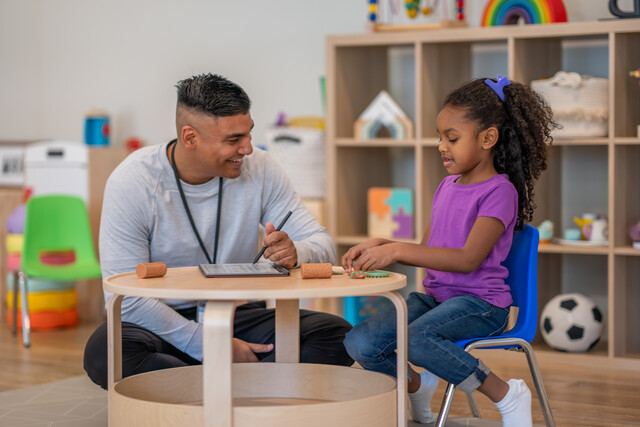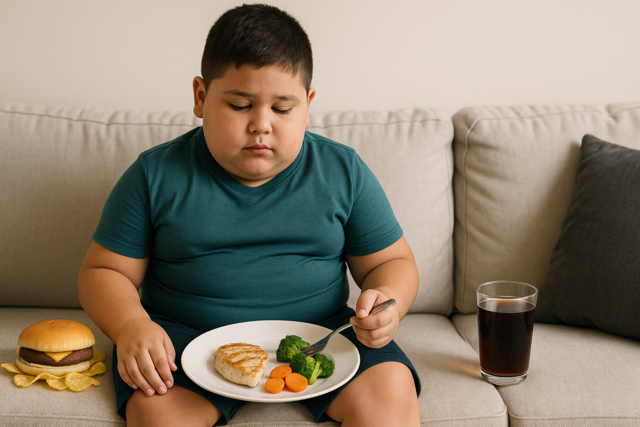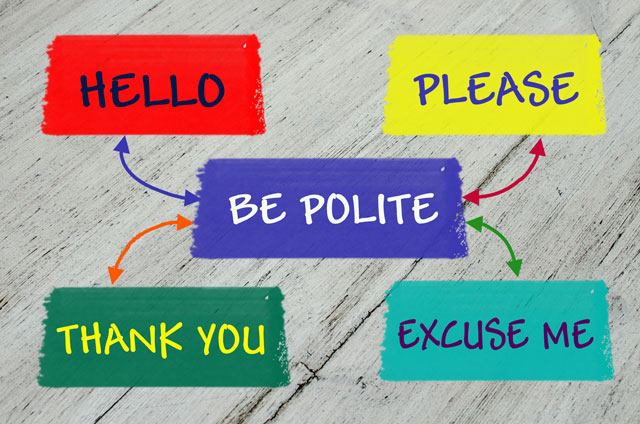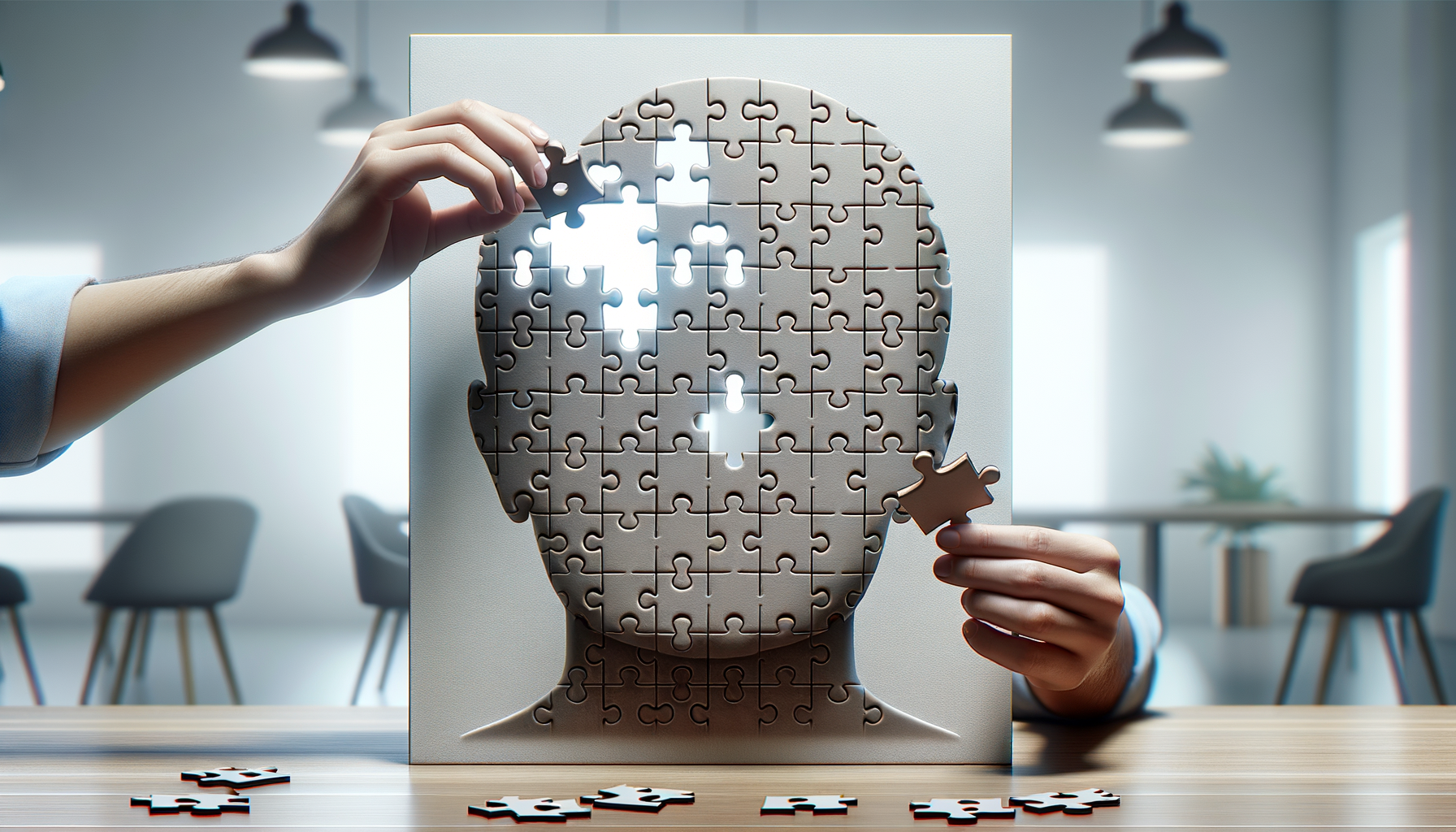Research on Child Development in Understanding Positive Parenting
Research shows parents who better understand child development, and how best to care for children at various ages, also parent better. Those with less or inaccurate knowledge often demonstrate ineffective parenting. This can undermine best outcomes for children.
We will cover the areas in which knowledge is strong and where it is lacking on what parents know about child development. Next we will explore the principles behind child development. We will then look at major milestones and paths of development in the brain, cognition, and social-emotional functioning.
What Parents and Other Caregivers Actually Know About Child Development
There are now several surveys that shed light on what parents and other adults know, and don't know, about child development. While there are areas where adults have a pretty good grasp of child development, there are still substantial and troubling gaps.
A research survey of 3000 U.S. adults in 2000, with about a third being parents of children birth to age six, looked at how accurate they were in the areas of physical, cognitive/intellectual, emotional, and social development of young children. In 2007, a survey based on the same U.S. questionnaire was conducted in Canada with over 1400 adults who interacted with children under age 14. This was repeated in 2014, with the finding that knowledge of child development had not changed since the 2007 survey. Let's take a look at the highlights.
Most parents understand:
-
A child's capacity to learn is not set at birth and can either be increased or decreased, depending on interactions with their parents.
-
The experiences a baby has in the first year of life set the stage for later school performance.
-
A child's sense of self-esteem (how they feel about themselves) begins to develop during the first two years of life.
-
Play is important for children's development.
-
Parents know the most about physical development, compared to cognitive or social-emotional development.
However, many parents mistakenly think:
-
A child doesn't begin to take in and react to their environment until they are two months or older, when, in fact, this happens from birth.
-
The bond between a parent and child cannot develop as strongly for working parents, as for those who stay at home with their children, yet the evidence does not support this.
-
Picking up a baby of three months each time he or she cries will spoil the child. This is of concern, because this is how babies communicate, and they learn to trust their caregivers if they are attentive and responsive.
-
A child's misbehavior can be based on revenge, where the parent interprets a child being angry and attempting to get back at them, at younger ages than any child would be capable of.
-
Spanking as a regular form of punishment helps children develop a better sense of self-control, yet a majority also acknowledge there are negative outcomes to spanking, including the child showing less self-control by being more aggressive. Children who are spanked regularly have more trust issues and feel badly about themselves, as well. The research is very clear that physically punishing a child by spanking and hitting is detrimental to their development.
Findings such as these demonstrate, overall, that parents are poorly informed about child development and are often implementing practices that cannot support optimal outcomes for their children. The good news is that parents can readily educate themselves. Next, we will look at the basics of child development, but encourage you to make a more in-depth study of this topic to help you practice positive parenting.
The Foundation of Child Development
Domains and Principles
Before looking at specifics, it's useful to have some background for child development. First, there are three accepted domains of development:
-
Physical: Related to the body and includes brain development; changes in the appearance of the body; perceptual, visual, and motor skills; and physical health. It's important to note that brain development impacts all the domains.
-
Cognitive: Related to the intellect and thought processes; imagination, creativity, and language.
-
Social-Emotional: Related to understanding, expressing, and regulating emotions and feelings; and social competence and interpersonal skills.
To better understand development, it's helpful to know there are a number of overarching principles about development in the three domains.
1. Multi-dimensional. Across the three domains, development is multi-dimensional. Milestones that happen in the domains have a universal order, meaning development in all children follows a similar and orderly sequence. However, within the sequence there are many individual differences. For instance, self-awareness (knowing that one is a distinct person) happens for all babies, but for an individual baby, can start anywhere from 15 to 24 months.
2. Multi-directional. Rather than development going from one domain to the others in only one direction, the domains influence one another. For example, certain motor development has to be in place before a child can walk, which is in the physical domain, while then using walking to become more emotionally independent or autonomous is in the emotional domain. Once children feel secure to independently explore their environment, this has an influence on motor development as they practice running and climbing -- and so, the cycle goes on.
3. Contextual. The environment or context a child is raised in interacts with his/her inherited characteristics. This is commonly called "nature versus nurture," but we now know it is an interaction between the two.
A good example is temperament, which is a child's biological way of approaching and dealing with his or her world. Some children are very adaptable to new situations, while others are slow-to-warm, and other children have a very difficult time. If the environment is a good match with their temperament, children have more positive outcomes than if the environment is not a good match. For instance, if a child who has a slow-to-warm or difficult temperament is not forced by their parents to jump in and join activities right away, they will be happier and better adjusted than if expected and forced to do so.
4. Continuous or in Stages. At a general level, development is continuous. However, there is strong support that there are notable and observable stages, most of which include a period of transition.
What Children Can Do, Know, and Experience by Age
In this article we'll take a look at the key developmental accomplishments. As studies show, parents are better informed about certain areas of development -- such as physical milestones; we will focus on how the brain develops, and on cognitive and social-emotional development where knowledge is less in place for parents.
Brain Development
Let's start with brain development, as this drives so much of development in all domains. The brain has been developing very actively in the prenatal period, but a tremendous amount happens after a baby is born. At birth, the brain is physically only a quarter of the size it will be as an adult and it is the lower part consisting of the spinal cord and brain stem that is well developed. These control the messages the brain sends to the body and back, and are important for basic functions and reflexes that babies have, like crying, rooting to feed, kicking and grasping, and eye and sound tracking.
Under-developed at birth are the higher brain regions. These are the limbic system, which controls functions like emotions, memory, and behavior. The even higher brain region of the cerebral cortex controls voluntary movement of the body, coordinating information from the senses, more advanced learning, and one's personality and individuality.
Particularly important is the cerebral cortex. While babies have almost all their neurons (brain cells) in the cerebral cortex at birth, and these do keep developing, the real work is making connections known as synapses. This happens in an extreme burst called the "exuberant period." At its most active, two million new synapses are formed every second.
This large number of synapses is present until middle childhood (about age eight), and then through the end of the teen years, after which time the number drops to adult levels. For cognitive and social-emotional milestones, like being able to see in color, fine-motor control of their hands, and even to develop a strong attachment to their parents, babies need these synapses. Over childhood and into the teen years, pruning happens which is where the synapses that aren't used die away. This allows the synapses which are heavily used to become more efficient and refined.
The other work of the brain is called myelination, which is the development of a substance that coats the mature brain cells. This is needed for clear and efficient transmission of the electrical charges that cross the synapses. Infants and young children process information, and therefore respond at a much slower rate than adults, because this myelination is lacking or still forming.
While the majority of the brain areas do form this vital insulation from birth to age two (and first in the areas primary motor and senses), the myelination of higher areas of the brain needed for integrating perception, thoughts, memories, and feelings happens throughout childhood and, in fact, on into early adulthood.
Understanding brain development has important implications for parenting. Children are bound by certain physical limitations of the brain. It will take many years for the child to fully develop emotions, memory, advanced learning, the ability to respond quickly, to control behavior, and for their personality to fully form.
Expecting a child to think, feel, and behave in a way that it too mature is unrealistic and inappropriate. Doing so will cause many problems to emerge, most prominently in a child's emotional well-being. On the flip side, providing a warm, stimulating, and healthy environment will help children's brains develop in an optimal manner.
Cognitive Development
Brain development is integral to thinking. One primary way we see evidence of how this develops is by understanding the stages of cognitive development. The most well-known theory is that of Jean Piaget, which shows us children actively construct knowledge by developing scripts (called schemas) for how the world works and how they should operate within this.
As children learn about the world, they must adapt to keep a sense of cognitive equilibrium (balance). This is important to feel that one understands and can master one's environment. Children (and adults by the way!) do so in two ways. One way is accommodating, which is to change the environment so it fits with what is known and believed. The second is assimilating, which is to change how one thinks to fit with what one experiences about the environment. It's this drive for equilibrium that also pushes children's thinking through the stages.
Children's thinking goes from the general to the specific and develops over the course of infancy through adolescence in four major stages.
1. Sensorimotor (Infancy). Children's thinking develops by interacting with the world through their senses and body. Babies learn about cause and effect; for instance, they will want to seemingly endlessly drop objects from their high chair to see what happens.
They develop object permanence -- which is the ability to hold a mental representation of a person or object in one's mind and therefore know it still exists even though it cannot be seen. Babies at about six to seven months of age will now actively begin to cry when a parent leaves the room, because they understand the parent is still present somewhere. Infants begin to develop some understanding of language, which is symbolic thinking, in that words stand for objects and actions. For example, a parent will see an older infant visibly look for a ball when the parent asks them to.
2. Pre-operational (Toddlerhood through Early Childhood). Children's thinking does not often follow logic or "operations" at this stage, and so they often make errors about how things work. For instance, even though the same amount of juice is poured into two cups, pre-operational children will believe a tall, thick cup contains more than a short, squat cup because they see the level of the juice is higher in the tall, thick cup.
They exhibit magical thinking and so believe inanimate objects are alive and that monsters are real, for instance. They are egocentric, which means they are not able to take the viewpoint of others either physically, when they look at a situation, nor emotionally or socially, so they cannot comprehend fully how others think or feel. For instance, a child this age will have difficulty choosing a gift for an older sibling because he/she will see the selections based on what they would like.
3. Concrete Operational (Elementary Age through Early Adolescence). Children now begin to be able to think logically or follow "operations" in many areas, such as numerical operations and measurement. This is provided these concepts are not abstract, but are concrete. This means mainly they can be seen and touched.
Children's thinking, though, is based on mental manipulation, which uses symbolic thought -- particularly reasoning and language. Children begin to know operations are reversible so that subtraction is the reverse of addition for example. They also become less egocentric and magical thinking decreases, although they can still be very imaginative and creative. Children now better see that actions have consequences with regard to people's emotions, for example. This is more sophisticated than the simple physical cause and effect of objects they could understand in earlier stages.
4. Formal Operational (Adolescence through Early Adulthood). Now teens can begin to think more abstractly. They can imagine and think through many outcomes, without having to directly act them out. The areas can be academically-oriented, but also socially/emotionally-oriented.
Interestingly, a return is seen to egocentrism, but is now related to teens being self-conscious, because they are developing a more sophisticated identity and feel they are being evaluated and judged on actions and beliefs. It should be noted that, in truth, at the end of adolescence, only about a third of teens reliably have reached formal operations. For this to happen, parents must provide support, and guide teens through many opportunities where they can experience, and think through, various outcomes.
Social-Emotional Development
Brain and cognitive development lay the foundation for children being able to interact well and rewardingly with others, and to more fully become unique individuals. Where this really is made possible is in the area of social and emotional development.
The most well respected understanding of how this happens is Erik Erikson's psychosocial theory. This theory revolves around how the ego, the term Erikson used following Freud for one's identity and personality, is formed. This process occurs through eight stages, from birth through death. Most of the stages are from infancy through adolescence. These are the ones we will cover here.
Each stage has a "crisis," which is not a catastrophe, but a challenge for how it will be resolved on a continuum between two endpoints. This process is primarily influenced by social forces, especially one's parents in the earlier stages.
1. Trust vs Mistrust (Birth to 1 ½). Babies are completely dependent on their parents (and other primary caregivers). They look to them for responsive, consistent, and gentle care to reduce uncertainty about their new world. Parents need to give such care so children develop trust and feel secure and believe they are worth loving and protecting. These feelings promote resiliency later, when children feel unsure and threatened outside of the parent-child relationship. A sense of mistrust can occur otherwise, and interfere with bonding and attachment -- and even relationships across the lifespan.
2. Autonomy vs Shame and Doubt (1 ½ to 3). As well as socially and emotionally, toddlers are growing by leaps and bounds physically and cognitively. They have a strong need to exhibit autonomy, which is independence of action and thought. They need their parents to allow and encourage them to explore their new skills and abilities, like dressing themselves and choosing their own toys and what they will eat. This leads to confidence. Parents also have to be able to handle their child failing, as it takes time to master these skills. If not allowed, or criticized when trying, children will develop a sense of shame and doubt about their abilities and competence.
3. Initiative vs Guilt (3 to 5). Initiative is dependent on a healthy sense of autonomy. Preschoolers more frequently and vigorously assert their needs and wants. Within reason, parents should support preschoolers taking the lead in planning what they will do and how they interact with others, especially peers. This makes them secure that they have the competence to make good decisions. If children are overly controlled or criticized, too much guilt results, and they feel they are a bother and must take their cues from others rather than themselves.
4. Industry vs Inferiority (5 to 12). This is the period when the school age child is practicing industriousness in earnest and where their work ethic gets established. School and peers become a major part of their lives as they focus on learning to read, write, do basic math, and establish friendships and come to understand mastering these skills is valued by society. Parents and teachers must encourage and reinforce children's efforts so they will feel confident in their abilities. Otherwise they feel inferior and that they cannot be important and valued people.
5. Identity vs Role Confusion (13 to 18). While the child's identity has been forming all along, this is the stage where it comes to the forefront. Teens are questioning who they are and what their place will be in society. Parents need to support adolescents as they try on many roles and remember that all of us, teens included, have a strong need to fit in. Parents must practice patience, even when the temporary roles are not what the parent approves of. The teen most often, if allowed, will eventually settle in an appropriate place with their identity. If not allowed, or pressured to be something the parent forces on the child, this can result in role confusion. They either go along, but don't feel comfortable or fulfilled, or rebel and settle more permanently into a negative identity.
Summary
When observing how children grow and develop, we often focus on the physical, because it is the most obvious; but we see a tremendous amount is happening in the cognitive and social-emotional domains, as well. While children have a strong natural tendency to learn and become competent, the child-rearing environment has an equally strong impact on the degree to which this happens. A solid knowledge of child development by parents is essential for supporting these optimal outcomes.



























